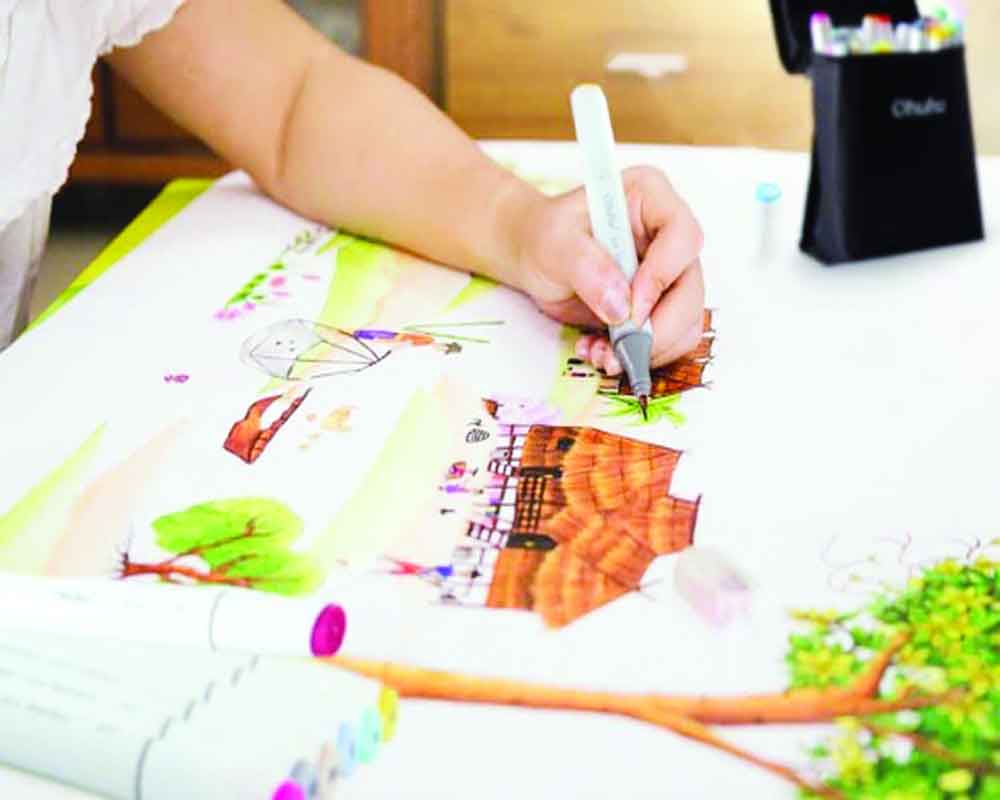The role of Arts in school curriculum has been ignored. Kartik Bajoria tells you how it can be integrated to strengthen academic learning
The arts, a subject-group that is often side-lined in favour of the more serious Sciences, followed by Commerce. Perhaps we as a society have not fully appreciated the value and role the arts can play, even when it comes to the learning and understanding of traditional subjects. Especially in our schooling system, if only we integrate the arts into the academic curriculum in a manner where they become a regular teaching method, we will see immense benefits in the degree of receptiveness in learners.
- Making learning fun
Most students love to partake of some form of the arts. It may be painting, singing, drama, a performing art - there will rarely be a student who is negatively predisposed to every kind of art form. We humans have a natural affinity and lure for the arts. The arts present an immersive experience to the viewer/listener, and a wonderfully creative expression to the performer. If we take what is typically perceived as a mundane subject, something theoretical such as History or Geography, and communicate it through the medium of art, learners will automatically imbibe lessons more willingly, and rather than mugging-up entire texts, will remember the lessons much more vividly, because their very dispensation would have been in a fun, entertaining manner. A classic case in point is to dramatise a History lesson, say that of the British Rule in India. If we make a pay out of that lesson, involve the students by assigning roles and having them enact scenes (chapters), not only will the participants enjoy performing it, even the other students who are viewing it will become positively predisposed to the lesson. It will simply not feel like studying any more. And isn’t the point of education to be fun?
- Critical and analytical thinking skills
By employing the arts in mainstream education, through classes such as art appreciation, film appreciation, we will develop the vital skills of critical and analytical thinking in our learners. Today, ask any student to share his or her opinion on a current issue, what you are likely to get in return is a factual report, not a well-thought out unique opinion. It can be argued that this is due to our learners not being exposed to opportunities of developing their opinion-formation in the first place. By integrating lessons such as art appreciation, learners will get a chance to acquaint themselves with interpretive thinking, which will form the foundation of them honing their critical and analytical thinking, which, eventually, is an ethos that will permeate their general way of being, and will get applied to subjects across the board. The arts, can do this very effectively.
- Lateral thinking
Another facet of a young learner that the arts can springboard is lateral thinking. With international boards slowly coming into Indian schools, the focus is shifting from rote-learning to a more exploratory, free-thinking based education philosophy. However, the vast majority of our schools still do not espouse this learning method. Integrating the arts into a school's curriculum can prove to be that critical step towards developing a student’s lateral thinking abilities. The arts tend to be abstract. They have room for multiple points of view. There is no one right or wrong answer. If a student watches a film he or she might feel completely differently about it than his peer; and neither would be wrong. Further, a painting, a sculpture, instigates interpretation on the part of the learner, and compels the onlooker to view the creation from several stand-points, which directly influences the ability to think laterally, a skill sorely lacking, and desperately needed in the me-too world that we currently exist.
- Communication Skills
Inculcating a robust arts-based curriculum will also aid in learners developing strong communication skills. A good piece of art always tells the artist’s story. This may be political, societal, personal; that is besides the point. But rather than trying to get our learners to only write and deliver speeches and debates; if we can get kids to express themselves through art from an early age, they will likely develop an entirely new and creative way of expressing themselves, one that is fun, personal, imaginative.
- Discipline
In an era of attention deficit and fast-diminishing patience, practicing some form of art as part of a school's regular, ongoing curriculum can imbue students with a lifelong ethos of patience and hard-work. Any creation of art calls on the creator to work arduously on it. If this kind of dedication and discipline can be inculcated in learners from formative stages, we would have permanently resolved the attention-deficit problem of modern generations!
The positive in today’s situation is that if not schools, many external organisations are working hard to conduct programmes at schools, using the arts as a means of propagating academic curriculum, bundled therefore with all the fringe benefits that the aforementioned points outline. However, a lot more can be done, and ought to be done. If together, parents, educators, schools, make a concerted effort in this direction, it will be plain to see just how dramatic an effect an arts-integrated pedagogy can have on academic learning.
The author is Writer, educator and moderator


























